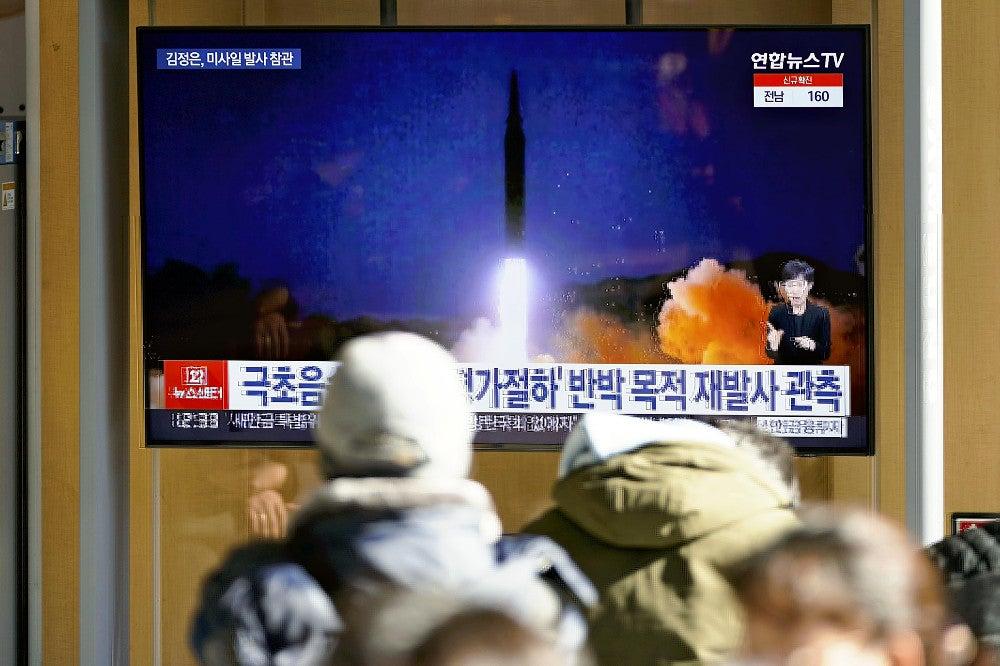The mystery of the projectile launc...
27
02
The mystery of the projectile launched by North Korea on January 27
At around 8:00 am on the 27th, North Korea launched two unidentified projectiles from Hamhung on the east coast toward the Sea of Japan. According to observations by the South Korean military, it has a horizontal distance of 190 km and a maximum altitude of 20 km.
Because there is an uninhabited island 190km from Hamhung that the North Korean military always uses as a target, there is a high possibility that they are targeting this island as well.
Since the distance of this projectile is short and the altitude is quite low, it seems that the Japan Self-Defense Forces were unable to detect it with their radar as it was hidden behind the horizon in observations from the Japanese side, and the Japan Coast Guard issued an alarm. Is not ...
The South Korean military observed a horizontal distance of 190 km and a maximum altitude of 20 km. For reference, let's compare similar numbers in the launch tests of KN-09 (300mm large rocket), KN-25 (600mm extra large rocket), and KN-24 (short-range ballistic missile).

KN-09 is the maximum flight performance at full power. The KN-25 has a maximum flight distance of 380km, and the KN-24 has a record of 410km, so this is the record when the flight distance is lower than that.
I tried to collect numbers that seemed to be close in the past launch records, but there was nothing that matched the horizontal distance of 190km and maximum altitude of 20km. We cannot deny the possibility that it was launched by changing the conditions of an existing missile, or a slightly improved version with a modified warhead weight, or a completely new unknown missile.
However, the possibility of new missiles seems to be low. Considering that the two launches this time were aimed at an uninhabited island as a target, isn't it likely that the missiles that have already been deployed in combat are routine training? It seems to be a type that carries multiple launches in one launcher.
The number is somewhat similar to the first test launch of the past hypersonic glide missile "Hwasong-8", but the Hwasong-8, which carries only one launcher per launcher, should have fired one at a time. , This time it's firing two shots, so it's probably different.
Postscript: North Korea announced that it successfully launched a cruise missile on January 25 and a ballistic missile on January 27.
The ballistic missile launched on January 27 was the Iskander type (KN-23). Since it is a missile with a track record of flying up to 800 km, it seems that the performance was considerably suppressed and launched.


![[Kill personally developed games] Top class in app history! Too beautiful water puzzle "a [Q] ua" | Famitsu App for smartphone game information [Kill personally developed games] Top class in app history! Too beautiful water puzzle "a [Q] ua" | Famitsu App for smartphone game information](https://website-google-hk.oss-cn-hongkong.aliyuncs.com/drawing/article_results_7/2022/3/3/66755df992ff2d2b1e1ab43844ef9f88_0.jpeg)





![[Latest in 2021] 10 recommended seat covers for cars!If you want to improve the texture and functionality of the car, choose the mounting type and material. [Latest in 2021] 10 recommended seat covers for cars!If you want to improve the texture and functionality of the car, choose the mounting type and material.](https://website-google-hk.oss-cn-hongkong.aliyuncs.com/drawing/article_results_7/2022/3/3/e5b44589e77141f3a633189165fb6f60_0.jpeg)